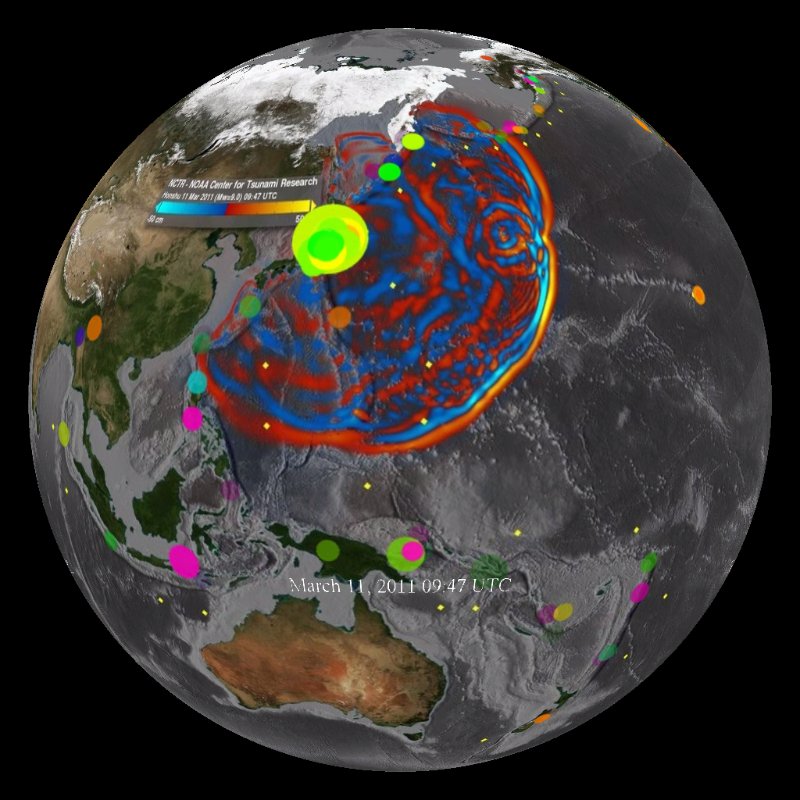Japan Earthquake, Tsunami Wave Propagation, and Wave Heights Combo

This was another of the largest tsunamis in recent memory, which occurred in 2011 off the coast of Japan.
For SOSx use Japan Tsunami: Wave Propagation - March 11, 2011.
Tsunamis are large waves created by earthquakes or other large disturbances in the ocean like landslides.
The low vibrations created by such an earthquake sometimes cannot be detected by humans, whereas larger animals like elephants can sense the vibrations earlier. Anecdotal evidence suggests that animals will sometimes behave differently before a natural hazard, and a laboratory study showed that silkworms will display anomalous behavior when exposed to vibrations such as those in an earthquake. When these earthquakes are big enough and happen close to land, a tsunami can carry waves more than 100 feet tall into coastal areas. Tsunamis are a serious threat to ecosystems and humans. Tsunami-detection buoys are now in place throughout the Pacific Ocean, and are being distributed throughout the Atlantic. Very few detection buoys are implemented in the Indian Ocean, however, where one of the world’s deadliest tsunami occurred in 2004, killing 230,000 people. Above, an elephant pulls wreckage from the 2004 tsunami in Indonesia.
Download an SOS playlist for this module.

This was another of the largest tsunamis in recent memory, which occurred in 2011 off the coast of Japan.
For SOSx use Japan Tsunami: Wave Propagation - March 11, 2011.

The December 2004 Tsunami that occurred in the Indian ocean triggered the need for a buoy warning system to be put in place.

This historical tsunami model gives a sense of scope and how close to home (for the west coast of the U.S.) these disasters can happen.

This models a tsunami that was triggered by the largest earthquake in recorded history. The wave run-up in Chile was 82 ft high. We model past tsunamis in order to estimate the impact of future ones.